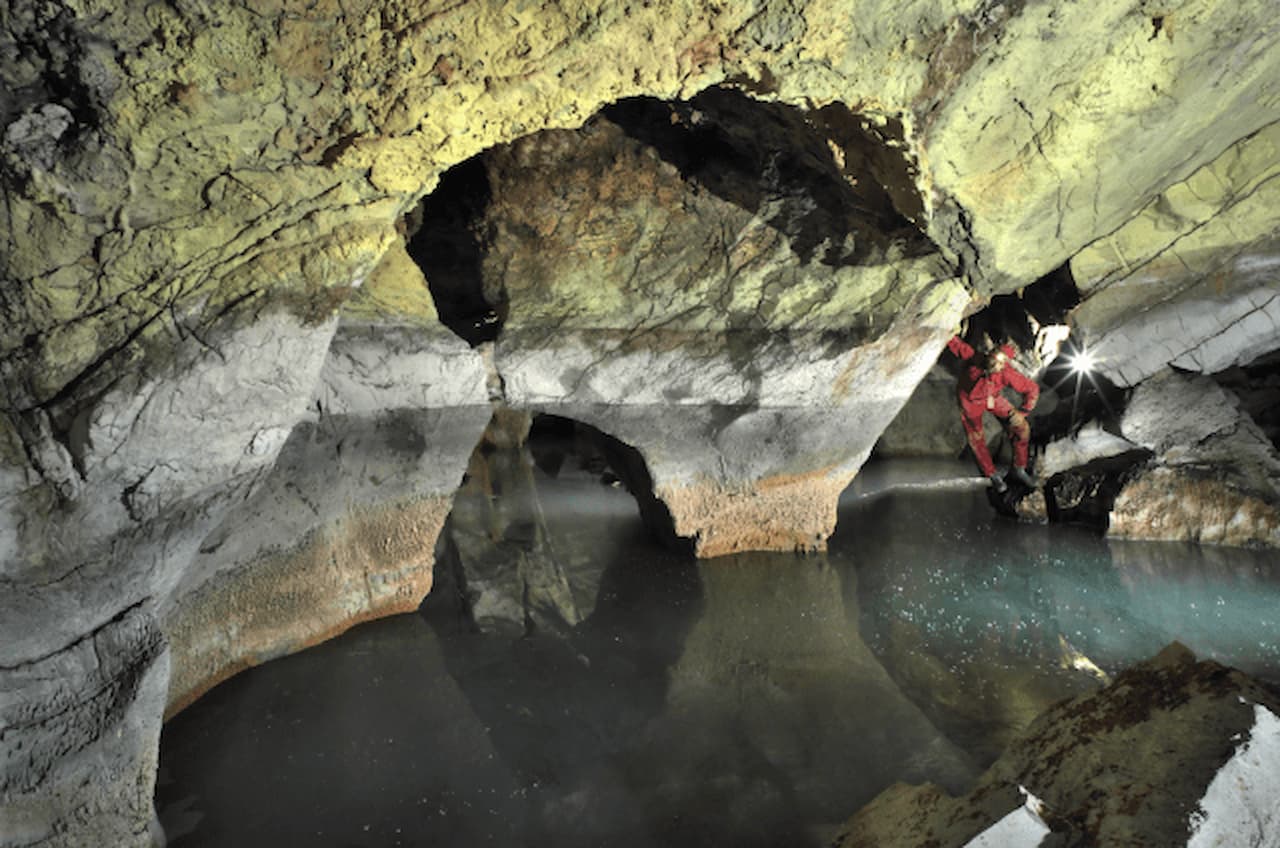In an unprecedented discovery, a team of Czech scientists has confirmed the existence of the largest underground thermal lake on the planet in the Vromoner region, south of Albania.
Named Neuron Lake, this body of water is located in an abyss over 100 meters deep, measuring 138 meters long, 42 meters wide, and with a volume of 8,335 cubic meters, significantly surpassing the previous record.
### How the expedition was and the technology used
The team, led by cave explorer Marek Audy, detected the lake in 2021, but it was not until a recent expedition, funded by the Neuron Foundation, that they were able to accurately map its dimensions using advanced technology such as lidar scanners and GeoSlam systems.
Neuron Lake is situated in a cave system known as Atmos, an underground network with active thermal springs and unique chemical processes that transform limestone into soft gypsum. These features make the area a natural laboratory for the study of geology and extreme biodiversity.

*The largest underground lake in the world, in Albania. Neuron Foundation*
### Importance of the discovery of the largest underground thermal lake
This discovery is particularly significant because underground thermal lakes are extremely rare and their study can provide valuable information about geothermal activity, hydrology, and the possible presence of microbial life in extreme conditions.
Until now, the largest known underground thermal lake was located in Budapest, Hungary, but Neuron Lake surpasses it in size and depth. It also surpasses famous thermal lakes like the Frying Pan in New Zealand and the Blue Lagoon in Iceland, although the latter are located on the surface.
### Future expeditions and conservation of Neuron Lake
Scientists plan new expeditions to analyze the water chemistry, the ecosystem’s biodiversity, and its potential impact on the region’s water balance.
Additionally, this discovery could be key for environmental conservation, as nearby springs depend on the lake as the main source of water.
### What is an underground thermal lake?
It is classified as a thermal lake because geothermal heating in the depths of the Earth’s crust continues to heat the lake itself; it is a kind of heat trap from below, which is simply retained in the water and remains at the same temperature.
Thermal lakes have proven to be of great geological importance, but also very relevant to how they could change our perception of underground ecosystems, particularly by showing how these ecosystems thrive in completely different conditions compared to those on the surface.
With the discovery of Neuron Lake, science takes another step in exploring the hidden ecosystems of our planet, opening new doors for geology, biology, and environmental conservation.
*Cover photo: Neuron Foundation*
Have you visited our YouTube channel yet? Subscribe!

